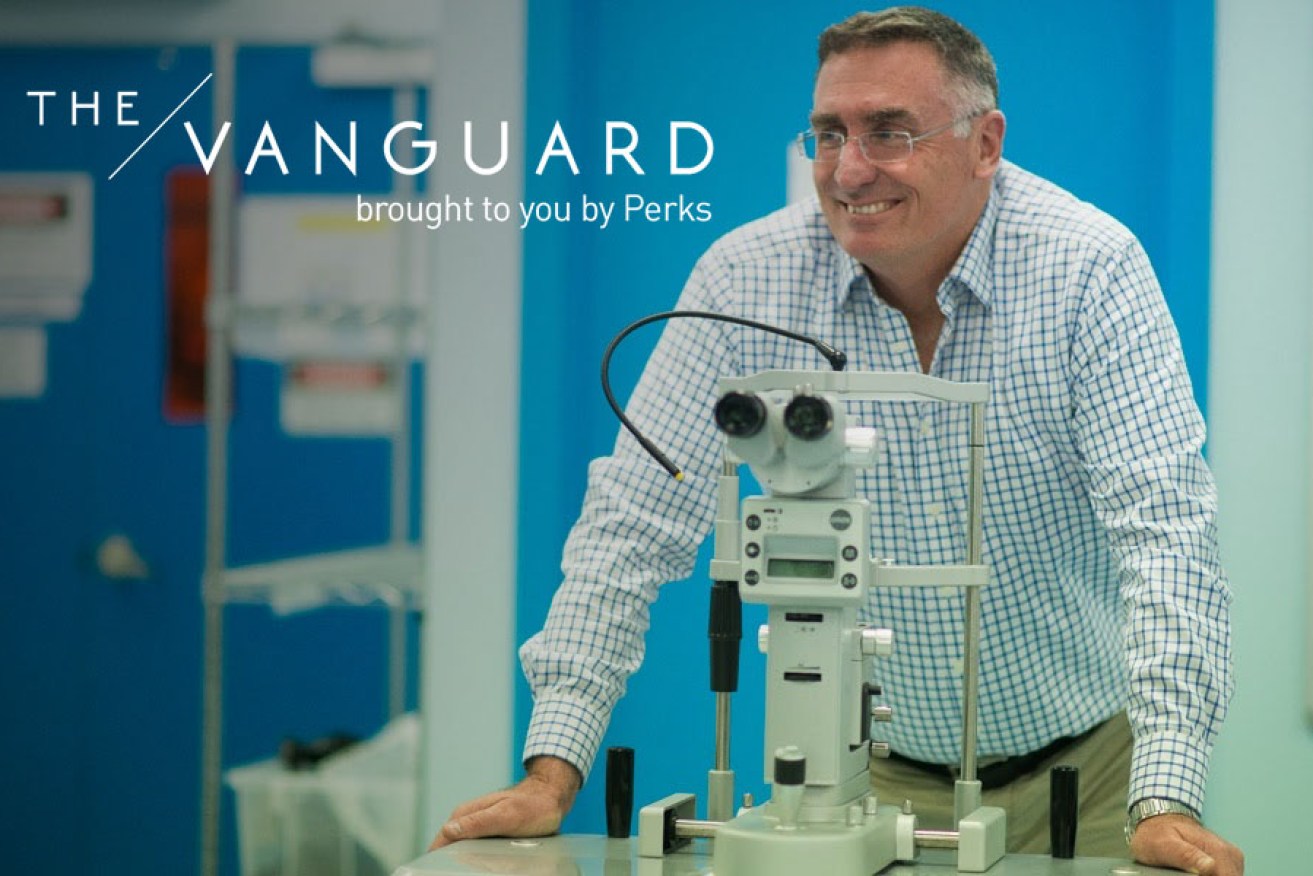The Vanguard: Local lasers lead the world

Ellex chief executive Tom Spurling with one of the company's laser devices
A couple of doors up from the Gilbert Street Hotel sits a modest looking building from which a South Australian company leads the world in the manufacture and sale of sophisticated laser devices that treat eye diseases.
Ironically, the popular watering hole is probably better known to locals than the company – Ellex.
An Australian Stock Exchange-listed company, Ellex Medical Lasers Limited has, over the past 30 years, quietly established itself as a leading manufacturer of lasers for the treatment of a range of eye conditions including glaucoma, cataracts and macular degeneration.
Chief executive Tom Spurling describes the complex science behind the lasers at the heart of the devices with elegant simplicity: “You put energy into a crystal, it gets all excited, and it squirts out a laser.”
“You have to control and harness that energy in order for the laser to cut steel or tickle your eye,” Spurling told The Vanguard.
Established in 1985 and listed on the ASX in 2001, Ellex is one of a handful of manufacturers of laser devices used by ophthalmologists to treat eye diseases. Ellex product applications include:
- Using a micro-catheter to carry a laser through an optic canal to improve fluid drainage and reduce the pressure caused by glaucoma which, if untreated, destroys the optic nerve and causes blindness,
- Creating a tiny hole in the capsule that holds the eye’s lens to allow light to reach the retina after cataract surgery,
- Destroying ‘floaters’ that appear within a person’s vision with a short burst of energy from a laser.
Ellex has also designed, developed and manufactured a new laser for treating age-related macular degeneration, a condition where the centre of the retina is progressively destroyed, seriously impairing the central vision required for daily functions like reading and driving.
Ellex’s new laser device targets damaged cells and encourages adjacent cells to effectively repair the damaged retina.
“Macular degeneration is becoming the biggest spend by governments and insurance companies around the world,” Spurling said.
Spurling said a clinical trial is currently underway for the new device, which he describes as a “flagship” product for the company, with 290 people having been recruited. Half have received treatment with the laser and the balance receiving “a flash of light” in their eye, effectively the electronic version of a placebo.
The results of the trial are expected to be published in a peer-reviewed medical journal in early 2018 but the device is already proving popular with ophthalmologists in Australia, Germany, the Netherlands and New Zealand.
Spurling exudes a quiet confidence in the macular degeneration laser and sees it playing a significant role in the company’s future.
“We have a strong belief that our macular degeneration laser will do very well. We believe we will be way out in front as an ophthalmology laser company treating macular degeneration in the future.”
It’s a long way from the origins of the company which grew out of the expertise and research of the Weapons Research Establishment in Adelaide with its early involvement in laser research – and other defining moments in the state’s history like the nuclear testing at Maralinga in the 1950s. A number of the scientists who later worked at the Defence Science and Technology Organisation also worked at Ellex in the 1990s.
Spurling said the result was that “we ended up with an inordinate amount of laser technology in Adelaide”.
Asked to define ‘innovation’, Spurling replies: “Innovation is doing anything in a different way and a better way, not necessarily some idea that has no market and has not been done before”.
“Innovation can be something as boring as innovating the way you get an invoice approved so you don’t have to have so many people handling an invoice,” he said.
“The complexity of that innovation goes up and up and you consider whether you can get a laser of just the right beam profile to tickle the retina at just the right rate that stops a disease progressing.”
Spurling says Ellex is also exploring an innovation in its business model which has nothing to do with lasers.
“It’s an idea that has some evidence that it works in the real world so we are going to spend an amount of money that we can afford to lose and we will see if it really does work,” he said.
“Coming up with new things that are competitive on the world stage is a thrill for anyone.
“I think trying to make money out of it is the best bit. You don’t want to be the guy lugging around a power point project trying to get money for it.”
Ellex is well beyond that point with its half year results to 31 December pointing to annual revenues in the order of $60 million after two successive years of double digit sales and profit growth. First half 2014-15 profit after tax was $800,000.
With a global market share estimated by independent analysts in May this year at 14.2 per cent, and only 0.3 per cent behind its closest rival, the US-based Lumenis, Ellex is poised to become the world leader of ophthalmic laser devices.
Now that’s something to which the drinkers in the Gilbert Street Hotel should raise a glass.





